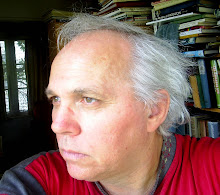from The Ascent of Man by Jacob Bronowski

X-rays showing the human skeleton (but not other parts of the body) and the proof that x-rays are electromagnetic waves - on the RHS there is a picture of that x-ray diffraction pattern of a crystal of DNA - from the pattern of waves set up as the x-ray particles hit the molecules the arrangement of atoms can be deduced. The photograph shows the "regular pattern of ripples" from which the position of the obstructing atoms can be inferred.
My comment - as an Engineering-tech - and also as someone who watched this programme by Jaocob Bronowski avidly when it first came out on TV via the BBC (about 1973) - I know that measurement is always problematic. In measuring a voltage or a current (or any quantity) we are always only getting an approximation - this is due to the errors of observation and this is related to and a part of the fact that the "thing" or the Being measuring if you like (or, if the "thing": an ammeter, voltmeter, oscilloscope, x-ray device, electron microscope - whatever) also always affects the thing measured. One might say - but reading errors are no problem to this theory (statistics actually ensures that there are always such kinds of errors) - but even reading a digital meter - none of these are absolutely accurate - look at any technical specifications for a meter or an oscilloscope etc and you will see the limits of accuracy always given by the manufacturer - for practical purposes we can make useful measurements and we do so all the time - but if we are talking about investigating the fundamental nature of matter for example it doesn't matter what device or instrument we use - there is always error and there is always distortion. The effect of observation on events is also central to the Theory of Relativity by Einstein. Mathematics BTW - wonderful and as exciting a symbolic and magical Mystery it is - can only speak after the event - it cannot predict per se.
The problem of measurement and instrumentation is central to science and the problem of truth. It crosses into many fields and is not confined to engineering, science or technology. It is also related to Information Theory. These theories are related to philosophy, sociology, art, poetics, linguistics and politics - and then we link back to science and to the field I was at one time most interested in - telecommuncations and electronics and in particular problems of sig/noise ratios, channel capacity and various transmission systems.
Bronowski was an incredible man who became ill while making his classic documentary the Ascent of Man. He had wide interests and wrote abook about Blake and was greatly interested in poetry and culture - he also wrote poetry - and he was caught up in events leading to the Spanish Civil war - later he was involved with work and maths in similar arena to Leo Szilard, Fermi etc. He witnessed the aftermath of the Hiroshima bomb. (He was an offcial observor there.) At Auschwitz he is seen almost literally scooping up the possible molecules, mud and ashes of his relatives who died there. He was a passionate and deeply compassionate man.
for Jacob Bronowski from my poem: "Continue"
'Life was so darkened by your death...'
"What is the matter with the matter?" (Eyelight).
^^^^^^^^^^^^^^^^^^^^^^^^^^^^^^^^^^^^^^^^^^^^^^^^^^^^^^^^^^^^^^^^^^^
“This probing of the human body made x-rays exciting as soon as Wilhelm Konrad Roentgen discovered them in 1895, because her was findgin in physics that seemed designed to serve medicine…he was the hero who won the first Nobel Prize in 1920. [For physics.]
[To divert again my review (at the time this brilliant book was published I was the only person to review it) of Moonshine by Alan Brunton (which focuses or is predicated on the Life of Rutherford) gives an account of Curie and an insight into the intersection of poetry and culture (travel, exploration, etc) and science. Moonshine by Alan Brunton is one of N.Z.’s greatest literary texts by one of our greatest writers, performers, playwrights, or poets.]
"The smallest object that has ever been seen is a single atom of thorium [this may have been surpassed but the validity of the concept remains] ... And yet the soft image confirms that …even the hardest electrons do not give a hard outline. The perfect image is as remote as the distant stars.
.jpg)



No comments:
Post a Comment